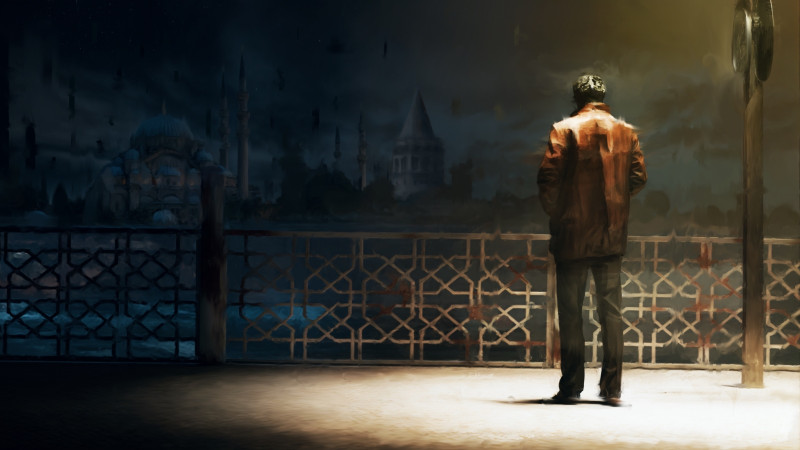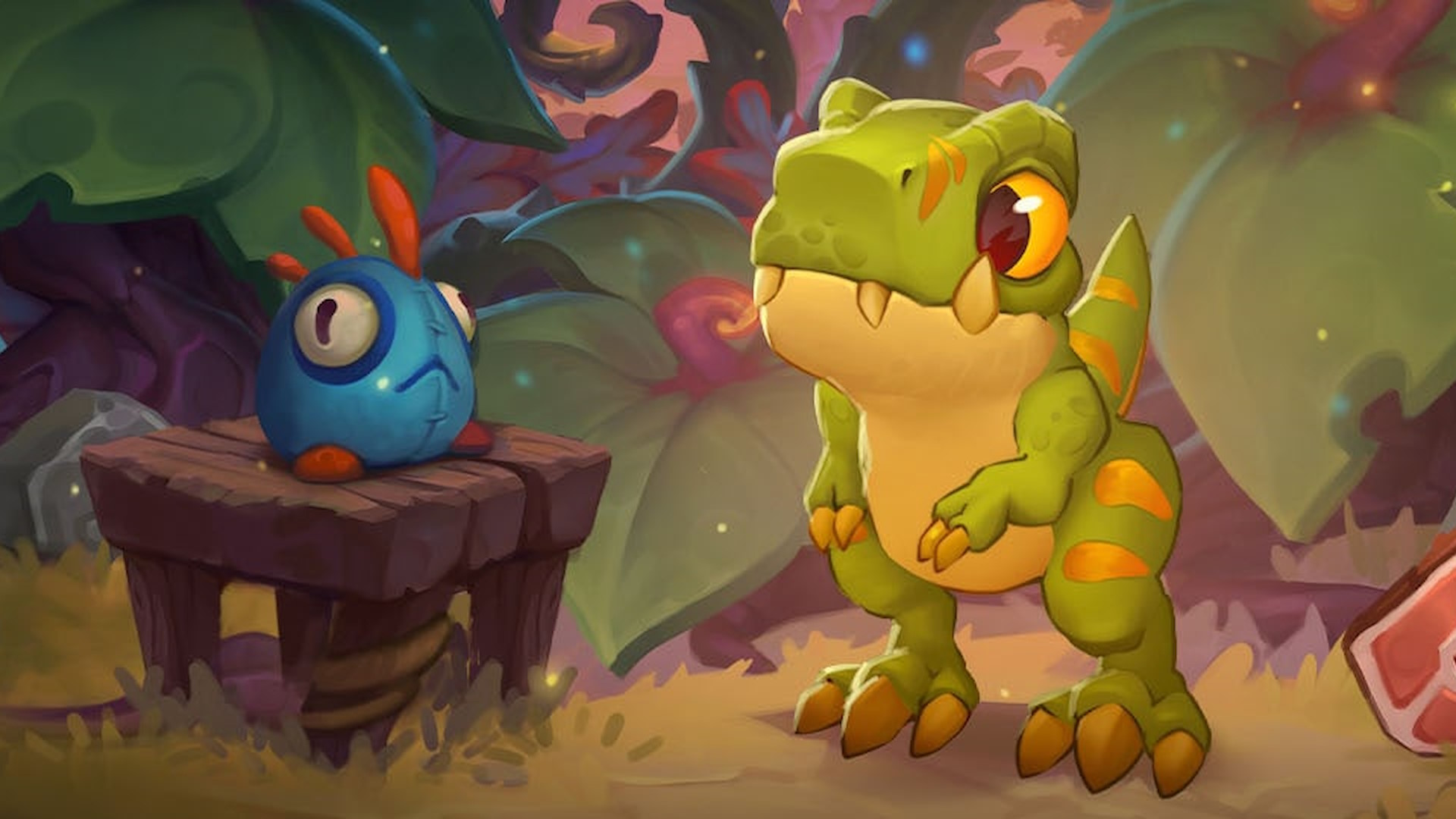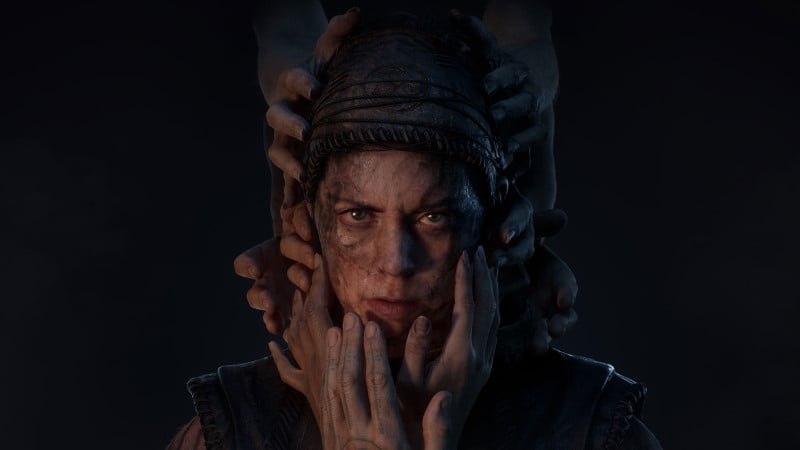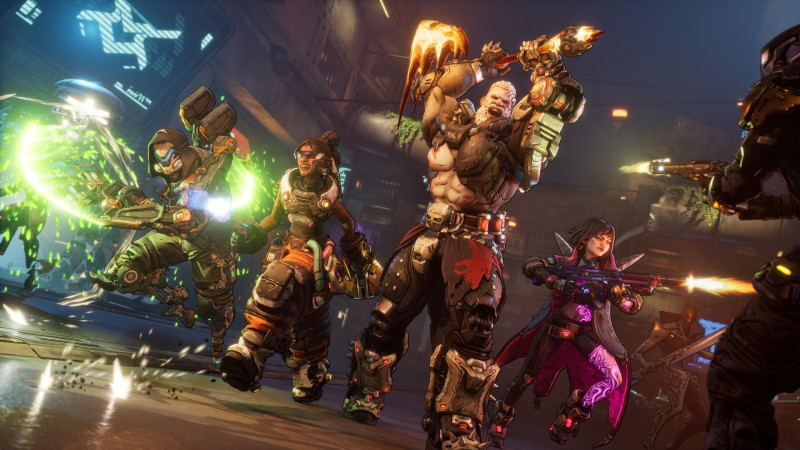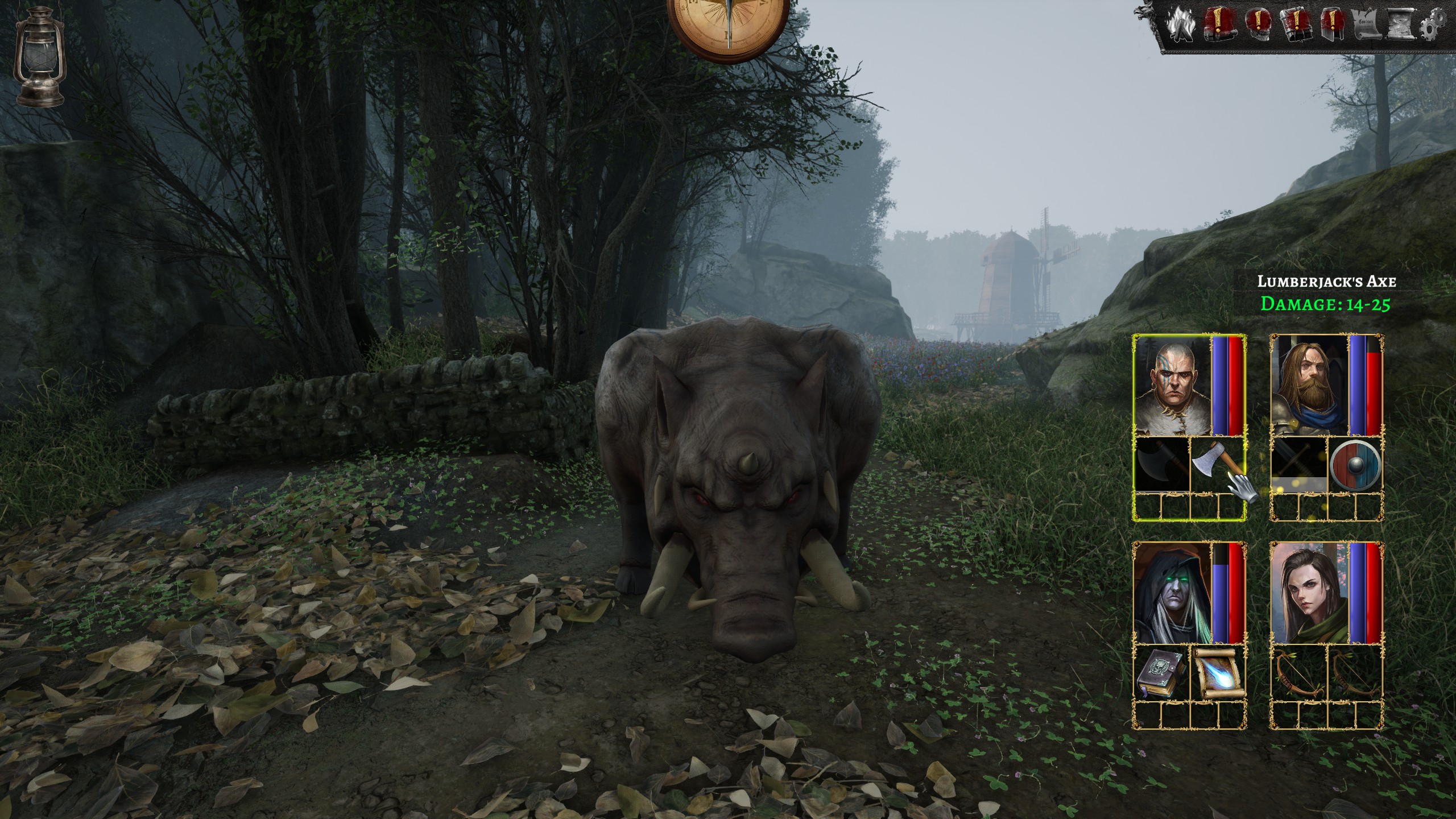
Dungeons of the Amber Griffin turns Kashubian mythology into fodder for a fantasy RPG.
Back when Durante declared the CRPG renaissance underway, he mentioned Might & Magic X: Legacy and Legend of Grimrock, two grid-based dungeon crawlers. While there have been a handful of games following in their footsteps, like Operencia: The Stolen Sun and StarCrawlers, the vast majority of CRPGs since have been pseudo-isometric instead. They’ve looked down on their miniaturized heroes from a distancing height rather than getting up close to their portraits. It’s been a renaissance with plenty of Bruegels, but few Botticellis.
Dungeons of the Amber Griffin aims to fix that. It’s a blobber, which is to say a game where you see things from the perspective of your whole party of adventurers—melee fighters up front, wizards and archers safely hidden at the back—who all stand on the same square and move together in a single blob. They’re also known as gridders, or DRPGs (the D stands for Dungeon). They deserve a second chance whatever you call them.
“For me it’s just Dungeon Crawlers,” says Tomasz Rożyński, who credits himself as the “CEO, game design, 2d/3d graphics, animations, level design, marketing, social media, VJ artist” of Frozengem Studio and is basically a solo developer.
“I am aware that our title, which is based on moving around a grid and rotating 90 degrees, may not appeal to everyone”, he says. “However, the use of such classic movement mechanics means that the game is not simply a hack and slasher. True, there is an effort to create dynamic and flashy combat, but after defeating the monsters, players have the option to slow down the pace of the game. They can take their time to search the terrain, look for hidden passages and solve puzzles.”
In the grand family tree of grid-based dungeon crawlers, one branch includes games where meeting enemies means transitioning to a turn-based combat battle screen. This branch leads from the Wizardry series down through games like Operencia, while the other branch, which spreads from 1987’s Dungeon Master down through Legend of Grimrock, has real-time combat taking place in the same UI as exploration. Dungeons of the Amber Griffin grows from the latter branch, so while Tomasz emphasizes the need to examine your surroundings between fights—right-clicking to free yourself from 90-degree turns so you can mouselook around finding hidden food or buttons that open secret doors—the combat can get frantic. I’ve misclicked while trying to cast a spell and got myself poisoned by a giant bug more than once.
There’s even a “music mode”, where you fight through levels designed to fit songs like the folk-metal of Percival Schuttenbach, unlocking items for use in other modes if you kill enough enemies. “Don’t jump straight into the game’s music mode,” warns Tomasz, “because you’ll get chewed out there.”
A couple of things mark Dungeons of the Amber Griffin out from its subgenre. The most obvious one is how it looks. There are sweet weather effects like pouring rain and snow, dense forests blocking your path, and smoke billowing out of a mushroom-picker’s chimney. Much as I like the goony clip-art of Dungeon Master, it’s a definite improvement. (If you want to see how it looked, you can download a free Windows version of Dungeon Master’s expandalone Chaos Strikes Back.)
The current version of Dungeons of the Amber Griffin was made in Unreal Engine 4, Tomasz explains, which “was crucial for us to implement the weather system, which has a huge impact on the gameplay. We have also started working on VR helmet controls and believe me, exploring in VR will be a very enjoyable experience. In the future, we will be migrating the game design to Unreal Engine 5. We have already conducted tests and the game looks much better in full raytracing,” he says.
(Image credit: Frozengem Studio)
That’s impressive for a developer who does almost everything on his own, though he has a little help from an unlikely source: the Midjourney AI, which he used to create background art for the in-game bestiary. New entries in the book are unlocked as you defeat monsters like the mutant boars called szargan, or the demonic fludin, which look like hairless bears without eyes. Rather than being blank, the pages for creatures you haven’t encountered are covered in faded pseudoscientific scrawlings of larvae, leaves, and beakers based on art produced by giving prompts to Midjourney.
“Midjourney AI is a great tool because it opens up the possibility for solo developers to achieve very good visuals at a low cost”, Tomasz explains. “I can’t imagine explaining to an illustrator what my vision is for creating the diabolical organic devices that might be in the bestiary. In my opinion, combining the work of illustrators with the work created by AI is an excellent combo. Of course, it’s not as if these blank pages in the bestiary are ready-made—all the graphics had to be cut into pieces, processed, cleaned, adjusted. It’s a bit like buying stock graphics.”
(Image credit: Frozengem Studio)
Would Tomasz consider using AI-generated art for other graphical elements of his game? “Yes, I would very much like to use graphics created by AI,” he says, “but in collaboration with illustrators. I think it is unethical to completely replace people, because in the same way someone will replace me one day. There are things that are simply better done using AI. Mostly it’s about the budget to produce the game anyway. Another problematic issue is the licensing of graphics based on Midjourney AI. I use the licence in private mode and, in the game, show graphics already processed heavily by me. I know there is a lot of argument about this. Until the situation on the legal side is fully resolved, I am using the AI in such a way that when the funds for the production of the game are raised, the AI graphics can easily be replaced by graphics made by illustrators.”
The second thing that marks out Dungeons of the Amber Griffin is its basis in the real-world people and locations of Kashubia, a part of Eastern Pomerania in what is now Poland. “Kashubian culture is distinguished by its language. It is a Slavic language spoken by more than 150,000 people,” Tomasz says. That’s why in his game you’ll choose from classes like the underworld priests called maga, the hunters called jachtorz, and the knightly warriors called ricerz. “Unfortunately,” he continues, “it is a language that is in danger of extinction—it is being supplanted by the Polish language.”
Kashubian words and places are everywhere in Dungeons of the Amber Griffin, preserved as if in amber themselves. Its fantasy setting includes a version of Gdańsk city, as well as “place names that are somewhat forgotten, such as names of lakes, hamlets and small villages”. The countryside above the dungeons, complete with traditional branching paths through the woods, is inspired by real locations too. “We have tried to depict the varied landscape of Kashubia quite faithfully—dense forests, hills, hillocks, valley gorges, numerous rivers and lakes. There is especially a lot of forest, as the area was once densely wooded.”
(Image credit: Frozengem Studio)
Though Tomasz says that Slavic mythology in general isn’t well-researched, “due to the small number of historical sources,” one aspect of it that is well-known, and particularly useful when you’re filling a fantasy bestiary, is demonology. “[D]emonic figures, whose names and descriptions have been preserved in legends, fairy tales, proverbs and curses, are quite well researched and described. This is also the case with Kashubian demonology. Interestingly, in Kashubian demonology, the world is not unequivocally black and white; there are characters who have both bad and good traits. There are also many figures who in pagan times were probably some kind of idols or spirits, but under the influence of Christianity were degraded to the role of devils.”
Making a game in Poland, in particular a fantasy RPG influenced by Slavic folklore, means having the grim visage of The Witcher leering over your shoulder. Watch the first 30 seconds of the announcement trailer for Dungeons of the Amber Griffin, and you’d be forgiven for expecting something like CD Projekt’s games.
But, Tomasz explains, both are simply part of a broader development scene in Poland—albeit at opposite ends of the spectrum in terms of budget, scope, and profile. “I am glad that there are so many developers because there is someone to learn from,” he says, “and watching the effects of the work of my compatriots really fills my heart with pride. I don’t feel that I am in the shadow of anyone. We go our own way and we don’t try to compete with anyone in any way. CD Projekt is light years ahead of us so there is no question of any comparison at all. All we can do is learn with humility, but keep our feet on the ground. In short, we’re a small team armed to the teeth with poor quality swords and wooden, crumbling shields…”
And, presumably, wizards and archers safely hidden at the back.
Dungeons of the Amber Griffin is scheduled for a 2023 release on Steam. You can download a demo there during Steam Next Fest, which ends on October 10.
